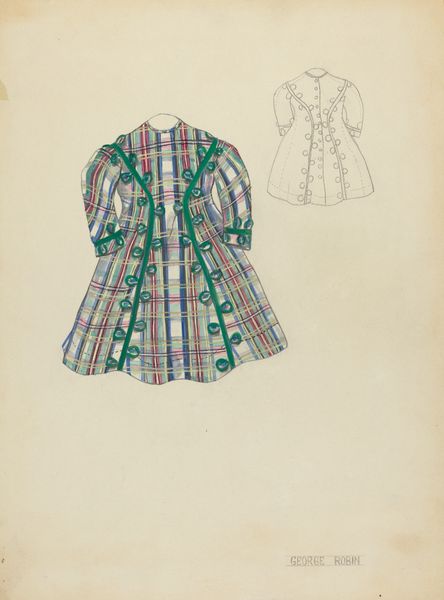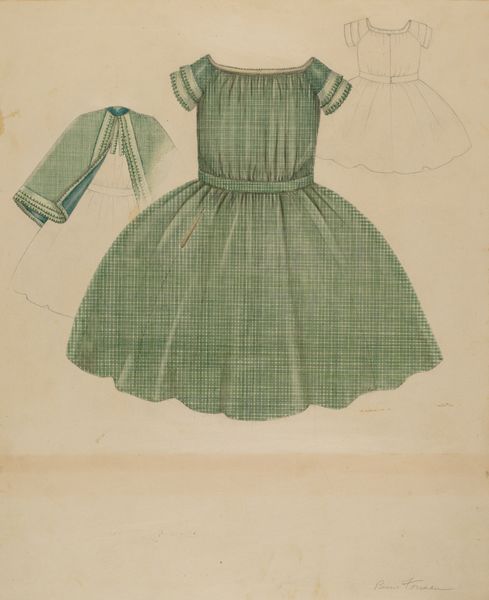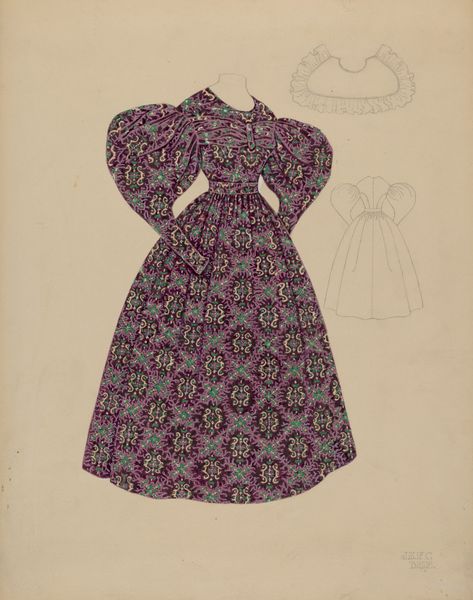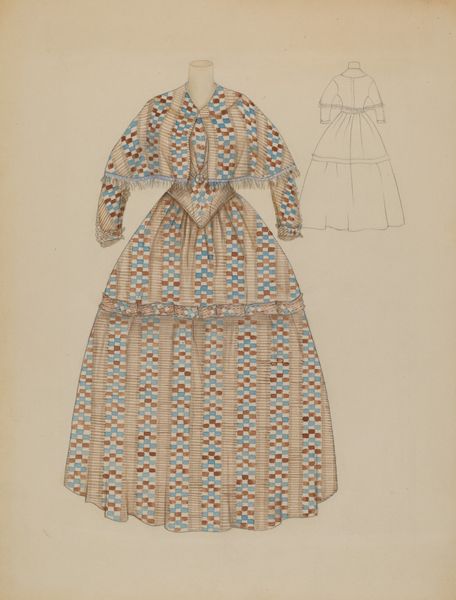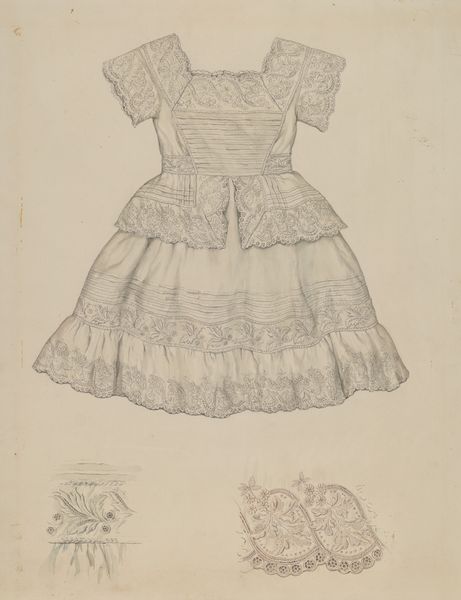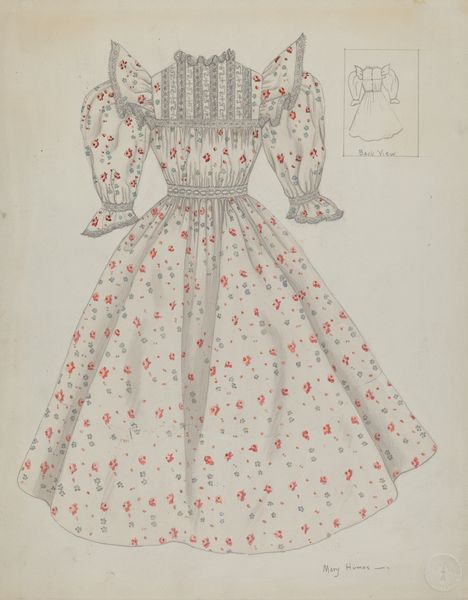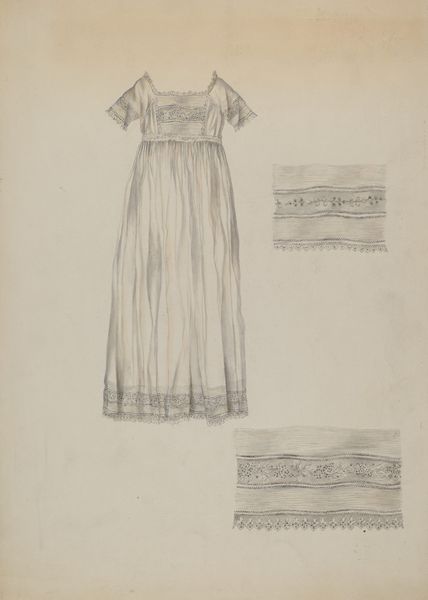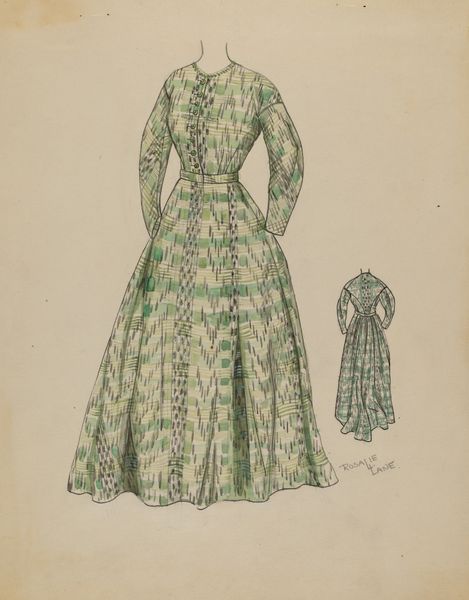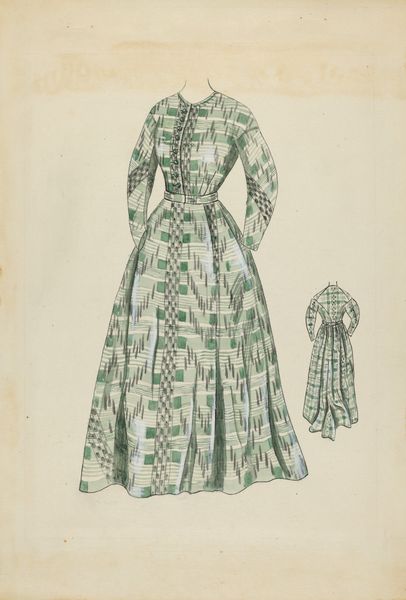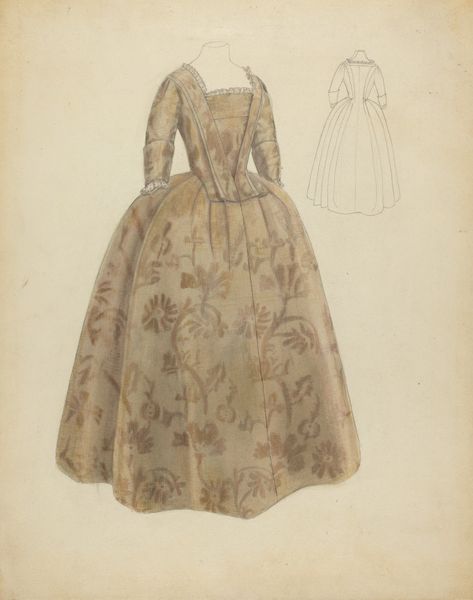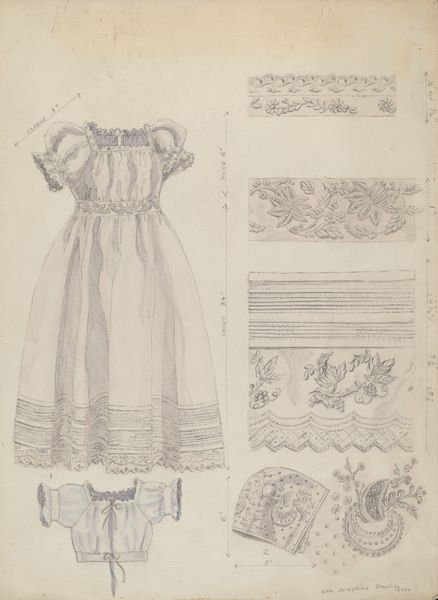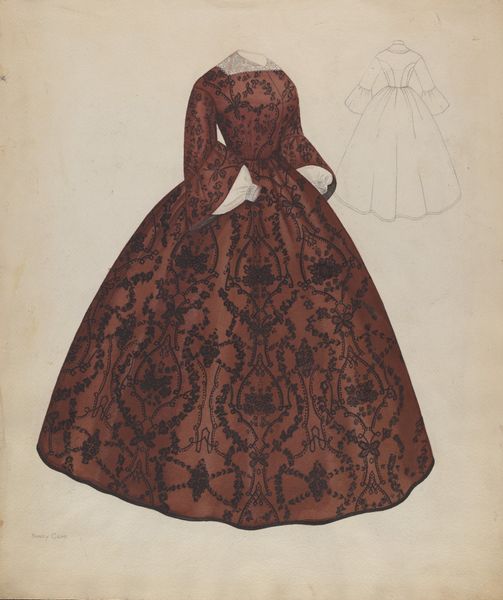
drawing, mixed-media, textile, paper
#
drawing
#
mixed-media
#
toned paper
#
light pencil work
#
fashion mockup
#
sketch book
#
textile
#
paper
#
personal sketchbook
#
historical fashion
#
sketchbook drawing
#
decorative-art
#
fashion sketch
#
sketchbook art
#
clothing design
Dimensions: overall: 36.8 x 28.8 cm (14 1/2 x 11 5/16 in.)
Copyright: National Gallery of Art: CC0 1.0
Editor: So, this is "Petticoat" by Lillian Causey, around 1936, a mixed-media drawing, looks like on paper. I’m struck by the intricacy of the design; it's like a blueprint for a very delicate garment. What can you tell me about this piece? Curator: What intrigues me is how this drawing operates within the history of fashion and design. It is not only a representation of a petticoat, but also a document reflecting broader trends in textile production, consumption and representation. Considering that this piece dates to 1936, it would be important to see if there are similar dresses catalogued from the same period, and from there ask if the drawing may have influenced dress making and if dressmaking influenced the drawing. Editor: I see. So you are saying that rather than just focusing on the drawing itself as a piece of art, we need to also look at it in context with its influence to textiles produced around the same period and potentially vice versa. Do we know if Causey was actually involved in the design process, or if she was an observer? Curator: That’s exactly the sort of question that helps ground this type of image. How was design work handled in that era? Were such drawings purely aspirational or connected to larger manufacturing operations? This brings to the surface how socioeconomic and industrial networks shaped design as a practice. If Causey worked with dressmakers, was her drawing simply a suggestion, a guide, or strict instruction? That, and what role do women and their creativity play in those socio-economic considerations? Editor: This gives me a whole new perspective. I was initially seeing it as a pretty drawing, but now it seems like a fascinating piece of evidence related to broader systems. Curator: Precisely. Thinking about how drawings like this functioned helps us understand the politics of imagery and production that often go unseen. Editor: So true. I guess, for me, thinking about the art’s social impact is such an important perspective shift. Curator: Indeed. Hopefully it is clear why.
Comments
No comments
Be the first to comment and join the conversation on the ultimate creative platform.
